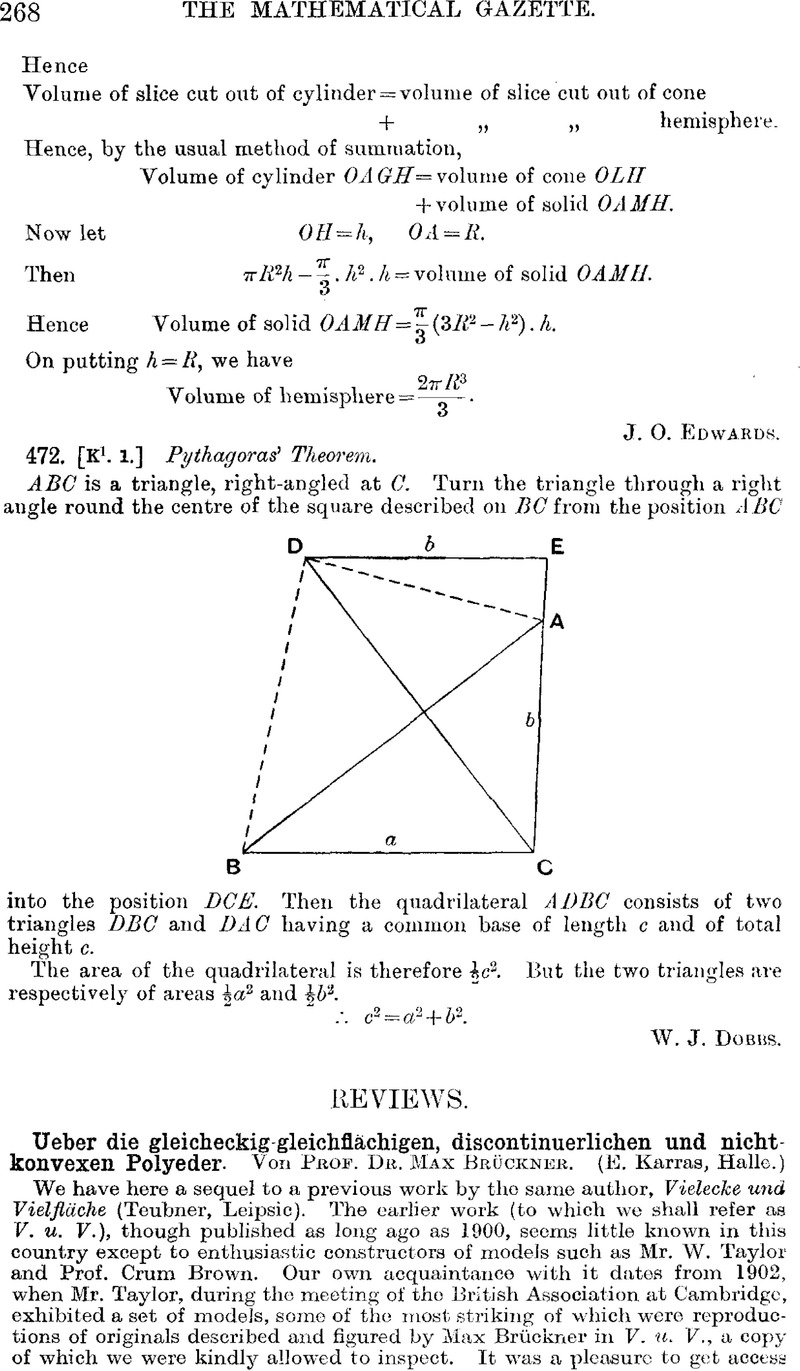No CrossRef data available.
Published online by Cambridge University Press: 15 September 2017

page 269 note * Abraham Sharp, in his Geometry Improved (1717), draws attention to the first of these wit remark that “the Notion hereof was imparted by a Friend who understood so much of it as enabled him to draw the several Parts upon Paper or Past-board and fold them up into a due Form.” At his friend’s request he investigated the relations of its edges and faces, and found that its derivation from the cube depended on tho cubic obtaining for the solution ![]() and working out various lines and areas witli his well-known ‘furor arithmeticus’ to 27 or more significant figures. His investigation concludes with an unexpected practical application. “Because this Body seems as advantageously composed for a Set of Dials as can well be contrived, I have calculated the Declination and
and working out various lines and areas witli his well-known ‘furor arithmeticus’ to 27 or more significant figures. His investigation concludes with an unexpected practical application. “Because this Body seems as advantageously composed for a Set of Dials as can well be contrived, I have calculated the Declination and ![]() elination of all the Triangle Planes.” Even while giving practical instructions for such a purpose his love of arithmetical nicety shows itself, inclinations being given to ten thousandths of seconds (e.g. 9× 49′ 35″·0219). We hope to return in a future note to this solid, our own notion whereof was also first obtained “through a friend,” by whom we were kindly presented with a set of mathematical stereograms dating from the early days of the stereoscope.
elination of all the Triangle Planes.” Even while giving practical instructions for such a purpose his love of arithmetical nicety shows itself, inclinations being given to ten thousandths of seconds (e.g. 9× 49′ 35″·0219). We hope to return in a future note to this solid, our own notion whereof was also first obtained “through a friend,” by whom we were kindly presented with a set of mathematical stereograms dating from the early days of the stereoscope.
page 270 note * It may be well to mention here that the memoirs on these 4 solids by Poinsot, Cauchy, Bertrand and Cayley have been republished in one volume (Nr. 151, M. 2.80) in Ostwald’s Klassike der exacten Wissenschaften under the title Abhandlungen über die Regelmässigen Sternkörper . . . übersetzt und herausgegeben von R. Hausner.
page 271 note * A solid thus formed is called kronrandig. So also is its reciprocal.